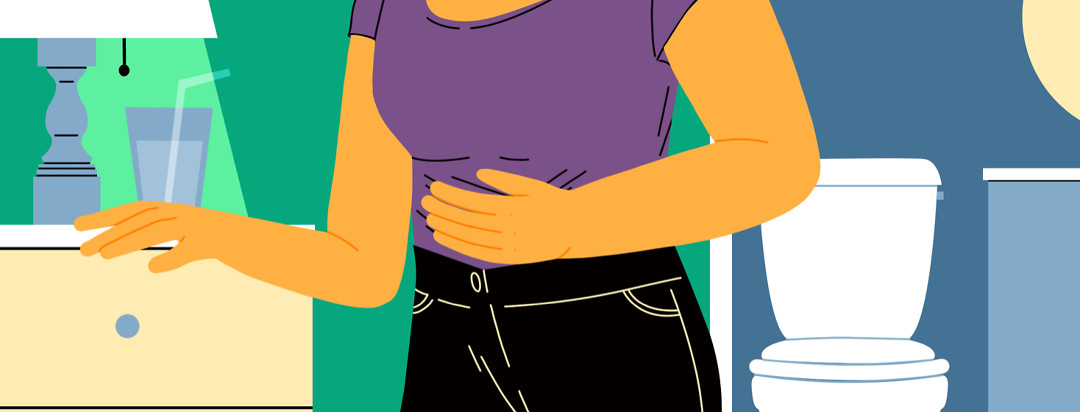The Benefits of Fiber for Parkinson's Constipation
Poop, we all do it! But for people with Parkinson's disease, it may be harder than others. Constipation refers to changes in consistency, ease of passage, volume, weight, and frequency of stool.
There are many ways that constipation is addressed by health care providers, including but not limited to using a step stool to decrease pressure on the bowels, adding fiber, using laxatives, increasing water, more exercise, and mineral or herbal supplements.1
Discussing your bowel movement history before your diagnosis of Parkinson’s may change how your doctor or dietitian helps treat your constipation once diagnosed. Working with a dietitian specializing in gastrointestinal issues can make a big difference in understanding and resolving your gastric motility concerns. To get going (to the bathroom), it all starts with fiber and water!
What is dietary fiber?
Dietary fiber comes from the edible parts of a plant that we cannot digest nor absorb in the small intestine.2 Once it reaches the large intestine, the two types of fiber play different roles.
There are two types of fiber: Soluble and Insoluble. Based on chemical, physical, and functional properties, these two forms of fiber differ.
Once soluble fiber enters the large intestine, it’s easily fermented by gut bacteria.1,3 The short-chain fatty acids produced by the fermentation serve as energy for cells in the large intestine.2,3 The more you feed your gut, the greater microbial diversity it will have.
You may have heard the term healthy microbiome – fiber plays a big role in creating it! Most foods contain a mixture of soluble and insoluble fiber. So, you’ll often see them listed as good sources for either category.
Soluble fiber
Soluble fiber is found in oats, barley, some vegetables (peas) and fruits (in the flesh, not skin), lentils, nuts, and seeds. Soluble fiber dissolves in water, forming a viscous gel that slows down digestion rate and macronutrient absorption.4
This process increases satiety, so you feel full for a longer period of time. Due to its viscous properties, soluble fiber does NOT provide a laxative effect, but it can help absorb fluid to relieve diarrhea. Also, soluble fiber acts as a gluing agent to keep stool together.5,6,7
Benefits of soluble fiber
BONUS - these gel-forming fibers also lower cholesterol. The fiber binds to cholesterol in the intestinal tract to be excreted from the body, resulting in lowering cholesterol levels. Consequently, less cholesterol gets reabsorbed in the small intestine, so your blood cholesterol levels are lower.
But the benefits don’t stop there! Soluble fiber can also improve glycemic (blood sugar) control through its effect on hormonal release and its ability to slow down digestion.8 If you want sustained energy, choosing foods with fiber is a must.2,4
Insoluble Fiber
Insoluble food sources include brown rice and whole grains (from the bran layer), fruit and vegetable skins, legumes, and nuts, and seeds. Insoluble fiber does not interact with water but increases the rate of transit through the small intestine.
Therefore, it provides a laxative effect and can help alleviate constipation. This is particularly useful for constipation! Similar to soluble fiber, insoluble fiber can improve glycemic control.
How much fiber do I need?
- Adults Under 50 Years Old: Males, 38 grams of fiber per day. Females, 25 grams of fiber per day11
- Adults Above 50 Years Old: Males, 30 grams of fiber per day. Females, 21 grams of fiber per day11
Now that you know how much fiber you need, see if you’re getting enough. Track your fiber for a few days.
Staying hydrated can improve constipation
More fiber requires more fluids! Inadequate fluid intake is a cause for constipation, resulting in frequent recommendations to treat with increased fluids.9 However, research shows that this is only useful for those who are under hydrating rather than meeting their hydration needs.
So, if you’re getting enough water now, adding more won’t help. Consuming natural mineral water (with magnesium and sodium sulfate) may also help with constipation.12
Water has been shown to promote gut motility to prevent and treat constipation in practice.10 There are several ways to check if you’re meeting your fluid needs. First, do you experience significant daily weight fluctuations? What color is your pee? Urine color ranges typically from dark orange to clear.
For adequate hydration, aim for a light yellow or lemonade color. To promote maximal fluid absorption, sip, don’t chug. Remember, you can also eat your fluids by incorporating foods with high water content such as cucumbers, watermelon, tomatoes, and more!

Join the conversation